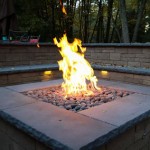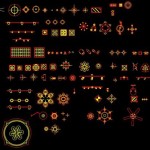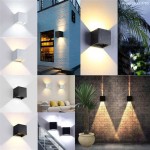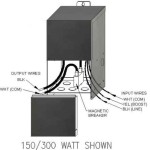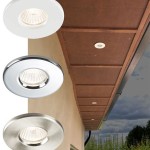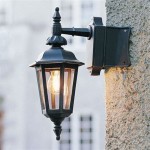Types of Polycarbonate Outdoor Lighting Materials
Polycarbonate has emerged as a leading material in outdoor lighting applications due to its exceptional durability, impact resistance, and optical properties. Its versatility allows it to be molded into various shapes and sizes, making it suitable for a wide array of lighting fixtures. Understanding the different types of polycarbonate used in outdoor lighting is crucial for selecting the most appropriate material for specific applications and environmental conditions. This article explores the key types of polycarbonate materials used in outdoor lighting, highlighting their properties and suitability for different purposes.
The selection of polycarbonate for outdoor lighting involves careful consideration of several factors, including UV resistance, light transmittance, heat resistance, and impact strength. Different grades of polycarbonate are formulated to optimize these properties, ensuring that the lighting fixtures can withstand the rigors of outdoor environments and maintain their performance over time. Furthermore, the specific type of lighting application, such as street lighting, landscape lighting, or security lighting, will influence the choice of polycarbonate material.
UV-Stabilized Polycarbonate
One of the most critical considerations for outdoor applications is UV resistance. Prolonged exposure to ultraviolet (UV) radiation from sunlight can cause polycarbonate to degrade, leading to discoloration, embrittlement, and a reduction in impact strength. UV-stabilized polycarbonate is formulated with additives that absorb or reflect UV radiation, protecting the polymer from degradation. These additives can be incorporated into the polycarbonate during the manufacturing process, creating a material that is inherently resistant to UV damage.
The effectiveness of UV stabilization depends on the type and concentration of the additives used. Some UV stabilizers work by absorbing UV radiation and converting it into heat, while others act as scavengers, neutralizing free radicals that are generated by UV exposure. The choice of UV stabilizer will depend on the specific requirements of the lighting application and the expected level of UV exposure. Products utilizing UV-stabilized polycarbonate are marked by extended lifespans, and reduced maintenance. This grade is particularly important in regions with high levels of sunlight exposure, such as desert climates or areas at high altitudes.
In addition to the base UV stabilizers, some manufacturers also use coatings to further enhance UV resistance. These coatings can be applied to the surface of the polycarbonate to provide an additional layer of protection against UV radiation. The use of coatings can also improve the scratch resistance and chemical resistance of the polycarbonate, making it more durable and long-lasting. For example, anti-scratch coatings are frequently paired with UV stabilization treatments for high-traffic or high-risk lighting applications.
The performance of UV-stabilized polycarbonate is typically evaluated through accelerated weathering tests, which simulate years of outdoor exposure in a controlled environment. These tests allow manufacturers to assess the effectiveness of the UV stabilizers and ensure that the polycarbonate will maintain its properties over its intended lifespan. The results of these tests are often used to provide warranties on the UV resistance of the polycarbonate material.
Impact-Modified Polycarbonate
Impact resistance is another crucial property for outdoor lighting materials. Lighting fixtures are often exposed to impacts from various sources, such as vandalism, accidental collisions, or severe weather conditions. Impact-modified polycarbonate is formulated with additives that improve its ability to withstand these impacts without cracking or shattering. These additives typically consist of rubber-like particles that are dispersed throughout the polycarbonate matrix.
The addition of impact modifiers increases the toughness of the polycarbonate, allowing it to absorb more energy before failing. This makes impact-modified polycarbonate ideal for applications where there is a high risk of impact damage, such as street lighting, security lighting, and sports field lighting. Different types of impact modifiers can be used, depending on the desired level of impact resistance and the other properties of the polycarbonate. In addition, thickness plays a part, with thicker sheets of polycarbonate naturally possessing higher impact resistance.
The impact resistance of polycarbonate is typically measured using tests such as the Izod impact test and the Charpy impact test. These tests measure the amount of energy required to break a notched sample of the material. Impact-modified polycarbonate typically exhibits significantly higher impact strengths than standard polycarbonate. This is extremely important in areas prone to severe weather events, such as hurricanes or hailstorms, to ensure lights remain intact.
Furthermore, some impact-modified polycarbonates are specifically designed to retain their impact resistance at low temperatures. This is particularly important for applications in cold climates, where standard polycarbonate can become brittle and more susceptible to cracking. The integration of these modifications ensures year-round dependability.
Optical-Grade Polycarbonate
Optical clarity and light transmittance are essential properties for outdoor lighting materials. Optical-grade polycarbonate is specifically formulated to maximize these properties, ensuring that the lighting fixture provides bright, even illumination. This type of polycarbonate is manufactured using high-purity raw materials and carefully controlled processing conditions to minimize defects and impurities that can scatter light.
Optical-grade polycarbonate typically exhibits high transparency, allowing a large percentage of light to pass through the material without being absorbed or reflected. Additionally, it features low haze and distortion, ensuring that the light is evenly distributed and free from glare. This is particularly important for applications such as street lighting and signage, where clear and consistent illumination is essential for visibility and safety.
The light transmittance and haze of polycarbonate are typically measured using a spectrophotometer. Optical-grade polycarbonate typically exhibits light transmittance values of 90% or higher and haze values of less than 1%. The consistent transmission ensures that the efficiency of the lighting system is maximized, using less energy to achieve the desired light levels. These features enable optical-grade polycarbonate to enhance the output and performance.
In addition to its optical properties, optical-grade polycarbonate also retains the excellent impact resistance and UV resistance characteristics of standard polycarbonate. This makes it a versatile material that can be used in a wide range of outdoor lighting applications. For applications requiring diffusion, specialized diffusion additives are integrated to scatter light evenly without compromising transmittance.
Flame-Retardant Polycarbonate
Flame retardancy is an important safety consideration for outdoor lighting materials. Flame-retardant polycarbonate is formulated with additives that reduce its flammability and slow the spread of fire. These additives can work by interfering with the combustion process, reducing the amount of heat released, or forming a protective char layer that insulates the material from the flames.
The flammability of polycarbonate is typically measured using tests such as the UL 94 test and the glow wire test. Flame-retardant polycarbonate typically achieves a UL 94 rating of V-0 or V-2, indicating that it is self-extinguishing and does not drip flaming particles. The glow wire test measures the material's resistance to ignition from a hot wire. These flammability ratings are critical for meeting safety standards and ensuring the safety of building occupants.
The choice of flame-retardant additive will depend on the specific requirements of the lighting application and the other properties of the polycarbonate. Some flame-retardant additives can negatively impact the optical properties or impact resistance of the polycarbonate, so it is important to select an additive that provides the desired level of flame retardancy without compromising these other properties. Some flame-retardant polycarbonates use non-halogenated additives to meet environmental regulations and reduce the potential for toxic emissions during combustion. The use of these environmentally friendly options is growing.
Flame-retardant polycarbonate is often used in applications where there is a high risk of fire, such as in emergency lighting, exit signs, and public transportation lighting. This ensures that the lighting fixtures will continue to function during a fire, providing critical illumination for evacuation and rescue efforts.
Anti-Fog Polycarbonate
In certain environments, especially those with high humidity or rapid temperature changes, condensation can form on the surface of outdoor lighting fixtures. This condensation can reduce the light output and obscure the visibility of the lighting fixture. Anti-fog polycarbonate is formulated with additives that prevent the formation of condensation, ensuring that the lighting fixture remains clear and bright.
These additives typically work by creating a hydrophilic surface that attracts water molecules and disperses them into a thin, uniform layer. This prevents the formation of droplets that can scatter light and reduce visibility. Anti-fog polycarbonate is often used in applications such as greenhouse lighting, refrigerated display cases, and outdoor security cameras.
The effectiveness of anti-fog polycarbonate is typically evaluated by measuring the contact angle of water droplets on the surface of the material. A lower contact angle indicates a more hydrophilic surface and better anti-fog performance. The integration of these additives provides sustained clarity in variable weather conditions.
In addition to its anti-fog properties, anti-fog polycarbonate also retains the excellent impact resistance and UV resistance characteristics of standard polycarbonate. This makes it a versatile material that can be used in a wide range of outdoor lighting applications where condensation is a concern.

5 Types Of Polycarbonate Sheet Unq

10mm Twin Wall Thermoclear Polycarbonate Panel Clear Duralight Plastics

Explosion Proof Lighting Led Lights For Hazardous Areas

Components And Materials Of Led Lamps Table

Top 8 Uv Resistant Plastics For Outdoor S Kemal

Polycarbonate Plastic View Strength Impact Resistance Curbell Plastics

Polycarbonate Sheet Cut To Size Whole Retail

10mm Twin Wall Thermoclear Polycarbonate Panel Broe Duralight Plastics

Polycarbonate Plastic Manufacturing Materials Plaskolite

Polycarbonate Sheet Cut To Size Whole Retail
